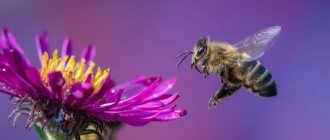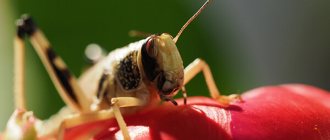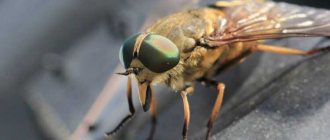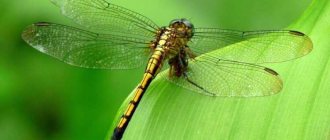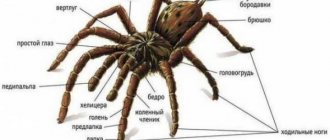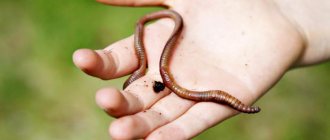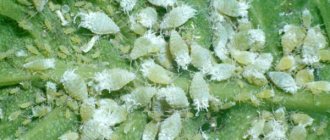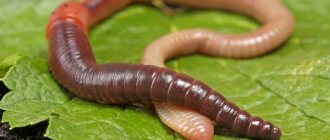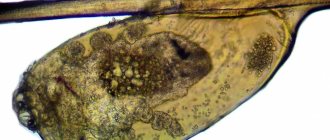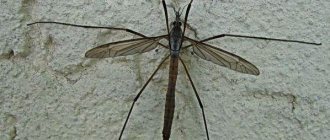Home » Interesting collections about animals
People are often afraid of insects or wary of them. Indeed, among the numerous insects there are pests and disease carriers. But there are many more harmless species; there are even useful ones that serve as irreplaceable helpers for people.
- 2 Ground beetle
- 3 Trichogramma
- 4 Lacewing
- 5 Ant
- 6 Bee
- 7 Medvedka
- 8 Silkworm
- 9 Cochineal
- 10 Lacquer bug
Features of the species
The number of animal species of this class on the planet significantly exceeds the number of other groups. To date, more than 625 thousand of their species are known. The most common beetles are the common beetles, which have hard front wings.
There is also a division based on the nature of nutrition. Among them there are three groups:
- Those that eat other insects (ladybugs, mantises).
- Those that eat waste from the decomposition of plants and animals (dead eaters, gravediggers).
- Feeding on plants (chafer beetles, leaf beetles, beetles).
It is worth noting that some types of ladybugs are specially bred in laboratory conditions. This is necessary in order to subsequently release them into greenhouses and gardens to destroy aphids.
Dead eaters and gravediggers are nature's orderlies. They prevent environmental pollution from waste from decaying living organisms.
Insects: benefits and harm
Adult beetles and their larvae feed on potato leaves. The beet weevil causes the greatest harm during the period of beet growth. At this time, worm-like larvae hatch from the eggs laid by the female, feeding on its roots. Click beetles damage many crops. Their worm-like elastic larvae - wireworms - bite into potato tubers, carrots, beets, and plant roots.
Of the lepidopterans in fields and vegetable gardens, white butterflies (cabbage, turnip, rutabaga) and winter cutworms cause great harm.
Caterpillars of white butterflies feed on the leaves of cabbage and other cruciferous plants, leaving only large veins. Caterpillars of the winter armyworm live in the soil, where they destroy sown seeds and emerging seedlings, gnaw plant stems at the soil level, and crawling to the surface, eat leaves (they feed on more than 140 species of plants).
Of the dipterans, some flies harm field and garden plants. Female onion flies, for example, lay eggs on lumps of soil near onions or garlic.
The hatched legless larvae bore into the bulbs and green leaves and eat away the passages in them. Damaged plants turn yellow and dry out. Similar harm is caused by cabbage and carrot flies, the larvae of which feed on the roots of cruciferous plants.
Insects are garden pests.
The most common aphids on garden plants are aphids, apple flower beetles, strawberry weevils, and raspberry beetles.
Larvae of the apple blossom beetle develop in unopened flowers of apple trees, eating away the ovaries and stamens, larvae of the strawberry weevil - in unopened flowers of strawberries, strawberries and raspberries, larvae of the raspberry beetle - in raspberry flowers. Butterflies that cause great harm in gardens are the codling moth (caterpillars develop in the resulting apples) and the gooseberry moth (caterpillars live in gooseberries and currants).
Insects are forest pests.
The most dangerous forest pest is the gypsy moth.
The caterpillars of this butterfly feed on the leaves of many trees. During years of mass reproduction of the pest, forest (and garden) trees may completely lose their leaves. May beetles feed on the leaves of oak, birch, and maple, and their larvae, developing in the soil, gnaw the roots of young trees. In coniferous forests, the pine silkworm causes significant damage. The caterpillars of this butterfly damage mainly pine, less often spruce and larch. Bark beetles settle in the bark of weakened trees.
Soil-forming processes
Termites and ants actively take part in loosening the soil. There are other insects that live in the ground, forming tunnels in it. By the way, without their activity, the decomposition of fallen coniferous plants becomes impossible. This leads to the accumulation of peat-like layers, causing the land to become infertile.
Squads of insects loosen the soil, enrich it with humus, and provide ventilation. The destruction of animal excrement and carcasses is also of no small sanitary importance. After all, substances released during the decomposition of organisms pollute the environment, including the soil.
Trichogramma
Not everyone knows about such an insect as Trichogramma. But this miniature creature brings invaluable benefits - it fights representatives of more than 70 species of pests. Moreover, it destroys not adult individuals, but eggs - Trichogramma lays larvae in them, which, as they develop, destroy the contents. In one season, a female can lay 500–800 eggs.
Trichogramma is an egg-eater from the order Hymenoptera, the smallest insect measuring 0.4 - 0.9 mm
The ability to eradicate pests on a large scale makes Trichogramma an alternative to chemical insecticides. It is even bred on an industrial scale and sold to gardeners.
Plant destruction
There are cases when certain types of insects destroyed entire fields. Damage can affect different plant organs. Sometimes not only leaves, fruits and trunks are destroyed, but also the root system.
Insects destroy plant tissue, bore passages in it, causing crops to dry out and die. As a result, entire crop plantations may be at risk of destruction. Of particular danger is the mass reproduction of individual individuals. There are known cases of locust attacks on fields, as a result of which all plants encountered in its path were destroyed.
Pests include some types of butterflies and beetles, aphids, locusts and others. It is worth noting that man is also to blame for this. He does not always adhere to the rules of crop rotation; he grows one crop in a certain place for many years in a row, which promotes the reproduction of insects. Humanity actively fights pests by using chemicals that are sprayed on plants and soil.
Ground beetle
Nocturnal predators that feed on other insects are of great benefit in a summer cottage. Ground beetles destroy harmful creatures - a variety of beetles, larvae, pupae and caterpillars. Even slugs and snails feed the garden nurses. In one season, a pair of ground beetles can destroy several thousand pests.
In one night, in search of food, a ground beetle can cover a distance of several kilometers.
Unfortunately, these beetles are sometimes considered pests and are destroyed. There are several species of ground beetles that are dangerous to plants, but they can be distinguished. You need to pay attention to the legs and jaws. Harmful ground beetles are stockier, with short legs and not very protruding jaws. The useful ones are large, lean, with long legs and well-developed jaw apparatus.
Disease carriers
The role of insects in nature is also associated with danger. Thus, some of their species are carriers of pathogens. These are mosquitoes, mosquitoes, bedbugs and others.
Endoparasites are often insects still in the larval stage. For example, they can settle in the body of cattle and cause serious harm to livestock. In addition, danger hangs over humans. Blood-sucking insects are capable of infecting with pathogenic microbes, as well as parasitic worms. Routes of transmission: through food (fly), bites (mosquito, tick).
Elk tick or deer bloodsucker
Moose ticks are not actually ticks at all. This is a separate species of insects that belong to the order Diptera, not arachnids. The parasites got their name due to some external resemblance to ticks and their diet. They feed only on blood. Deer bloodsuckers have not yet been studied well enough, but entomological science still has some reliable facts about them.
- Deer bloodsuckers are viviparous insects.
- They lay a larva ready for pupation on the body of an elk or other ungulate, which feeds on its blood, and then falls to the ground and there develops to the adult stage.
- Due to the structure of the body, the moose tick is practically invulnerable to physical impact; it is very difficult to crush it with a slap of the palm, like a mosquito or fly.
- Since the parasite feeds on blood, it can most often be found in areas where the main source of food lives - wild and domestic ungulates.
- The pest can always be found on elk and deer.
- Bloodsuckers navigate by heat and smell and can attack several dozen individuals.
How to distinguish this pest from flies, ticks and other insects? Are bloodsuckers dangerous for humans and how to deal with them if they appear in an apartment or bother you in any open-air areas?
Moose tick: photo
Bloodsuckers are quite small in size, so it can be difficult to see them in detail. A photograph taken on a phone with good sharpness, or a magnifying glass, can come to the rescue here if you managed to slam the parasite, but did not crush it completely.
- The body length of an adult bloodsucker reaches 3–4.5 millimeters; females are usually larger than males.
- The body color of the parasite ranges from light brown to copper and almost black, looking like stains of different shades or spots.
- The insect has wings and can fly, albeit rather clumsily, preferring to move by jumping or running.
- Transparent wings like those of flies are almost twice the length of the body.
- As soon as an elk tick lands on the body of the animal it will feed on, it destroys its wings and remains on the host without them.
- Without wings, the pest is somewhat reminiscent of a tick or spider with a large abdomen, but has only 6 legs, and not 8, like all arachnids.
Due to the characteristic appearance after the insect has destroyed its wings and because the parasite feeds on blood, it is often confused with mites, but in fact the pest has nothing to do with them. According to the official scientific classification, deer bloodsuckers are closer to flies than to ticks.
If you are still in doubt about what kind of parasite you have encountered, look at how the moose tick looks in the photo and compare it with the pest you discovered.
Moose ticks: are they dangerous for humans?
For people, the main danger that comes from deer bloodsuckers is bites and their consequences.
- The reaction to elk tick bites is individual for all people and can vary greatly - for some, the bites practically do not itch and heal in 3-5 days, almost the same as mosquito bites; for others, reactions are observed up to several weeks.
- An allergic reaction may occur to bloodsucker bites.
- In addition to redness, a lump or so-called papule appears at the site of the bite.
- Bloodsuckers can attack en masse rather than bite one at a time.
- Insects can carry Lyme disease or tick-borne borreliosis.
The main problem with bloodsucker bites in humans is that there is no single algorithm for the body's reaction, as is the case with the bites of most other insects. This complicates treatment, especially with a massive attack of parasites. Moose ticks are undoubtedly dangerous to humans, however, there is every reason to assume that the pests attack people only in the absence of other food. They do not reproduce on humans and some animals whose blood they drink, so scientists often conclude that the insect is simply not very good at distinguishing who it bites. Most often, parasites can be found on:
- Moose
- Reindeer
- Roe deer
- Kabanakh
- Foxes
- Mustelidae
- Dogs
- Cattle
Red Book
Considering the importance of insects in nature, some of their endangered species are subject to protection.
To date, about 95 species that are on the verge of extinction are listed in the Red Book. The majority of rare insects are beetles (36 species). These include alpine longhorned beetles, ground beetles, beauty beetles and others.
There are 33 species of butterflies in the Red Book - Apollo, Bluebirds, Ursa and others. 23 species of Hymenoptera are subject to protection. Among them there are seemingly common insects - bees and bumblebees. The remaining two species are dragonflies.
Interesting facts about insect breeding in different countries of the world
Many terrarium keepers breed insects, including grasshoppers and locusts. This is their hobby, which not all ordinary people understand. In some countries, they prefer to keep large cockroaches instead of cats and dogs. Maybe because they don’t make a sound and don’t disturb household members and neighbors. In addition, they are not picky in their diet and have no wool or fluff.
In Australia, for example, praying mantises are pets. By the way, some residents simply place these insects on their curtains so that they catch flies.
In China, preference is given to growing crickets. This is not just a hobby, but real entertainment. There are duels and fights between the crickets. The Chinese themselves are watching this with great pleasure. Swimming beetles are also raised. They are kept in aquariums and have a unique body structure.
As you can see, it is difficult to answer unequivocally what role insects play in nature. It can be positive and negative. Bees, bumblebees and other insects pollinate plants, taking part in their reproduction. Gravediggers and carrion eaters destroy hazardous waste generated after the decomposition of dead animals. Locusts and aphids destroy plants. Mosquitoes and bedbugs are carriers of diseases. As you can see, the importance of insects in nature is great and varied.
In this case, it is also worth noting the aesthetic component. After all, even the most ardent opponent of all representatives of the described class of animals will involuntarily begin to admire the beauty of butterflies.
Silkworm
We have silkworms to thank for the silk items in our wardrobes. The caterpillars of these butterflies produce silk. More precisely, silk fiber from which the insect builds its cocoon. One larva is capable of producing 15 cm of mulberry in a minute. And in the cocoon of this thread there can be about a kilometer.
The silkworm is unknown in the wild; it was domesticated several thousand years ago in China.
Other types of silkworms are sometimes bred, but they produce fiber of poorer quality.

